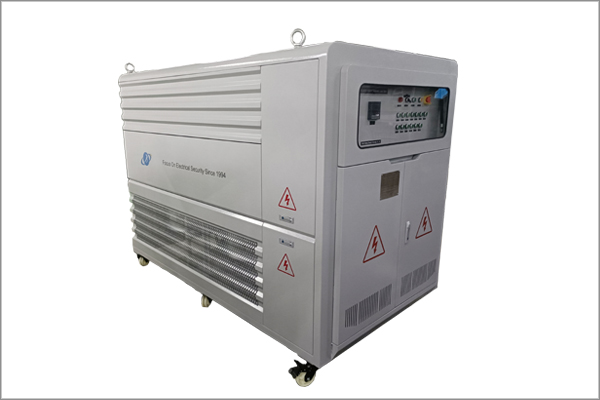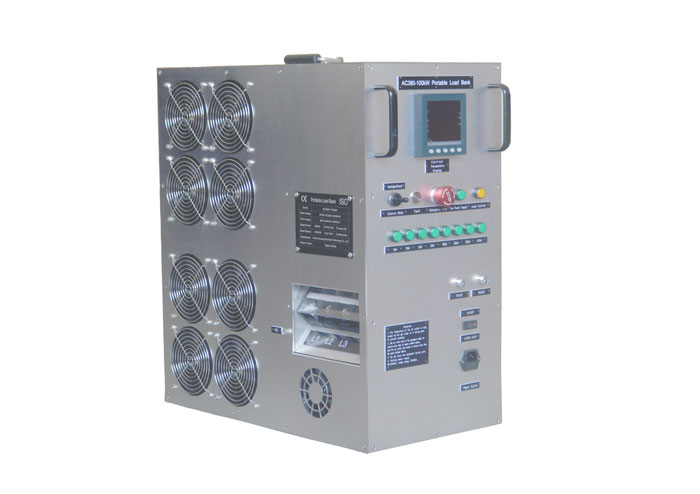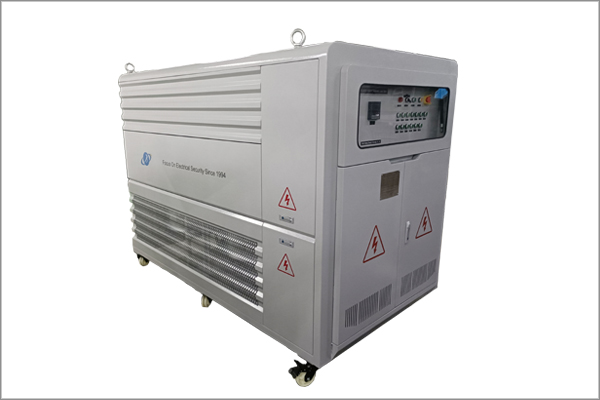Load Bank: A Solid Backbone for the Stable Operation of Emergency Power Supplies
Time:2025-05-14
In modern society, electricity is like the blood flowing through the veins of a city, sustaining every aspect of social operation. However, sudden situations such as natural disasters and equipment failures can cut off the regular power supply at any time. In such cases, emergency power supplies become the last line of defense for key facilities. In the emergency power supply system, the load bank acts like a "behind-the-scenes hero" that silently, laying a solid foundation for the stable operation of emergency power supplies through precise control and efficient protection.
I. Simulating Real Loads to Ensure the Performance of Emergency Power Supplies Meets Standards
Emergency power supplies mostly remain in standby mode under normal circumstances. Once activated, they must output power quickly and stably. But long-term idleness may lead to a decline in performance that is not easily detectable. The load bank can simulate various real load scenarios, from the power requirements of small electronic devices to those of large industrial machines. By setting different load parameters, it conducts comprehensive tests on emergency power supplies. During the testing process, the load bank can detect key indicators such as the output voltage, frequency, and waveform of emergency power supplies under different loads to determine whether they meet the standards. For example, in places like hospitals where extremely high stability of power supply is required, the load bank simulates the complex power consumption environment of departments such as operating rooms and ICUs and conducts rigorous tests on emergency power supplies. Only the emergency power supplies that pass the tests can provide reliable power for life-saving equipment at critical moments to ensure the safety of patients. This kind of simulation testing can not only detect potential problems but also run in the equipment in advance, enabling the emergency power supplies to quickly adapt to various complex power consumption demands in actual use and avoid power outages caused by unstable performance.
II. Stabilizing Output Voltage and Frequency to Ensure the Safety of Electrical Equipment
At the moment when an emergency power supply is started, there will be fluctuations in the current, and the voltage and frequency will also be unstable. Such instability may cause serious damage to the connected electrical equipment. Relying on its excellent regulation ability, the load bank can quickly absorb or release excess electrical energy to stabilize the output voltage and frequency. When the output voltage of the emergency power supply is too high, the load bank actively increases the load to consume the excess electrical energy and restore the voltage to the normal level. When the voltage is too low, the load bank reduces the load to assist the emergency power supply in increasing the output voltage. In terms of frequency regulation, the load bank also plays an important role. By adjusting its own working state, it ensures that the frequency of the alternating current output by the emergency power supply always remains within the standard range. In data centers, a large number of sophisticated servers are extremely sensitive to the stability of power supply. Even a brief voltage fluctuation or frequency deviation may lead to data loss or system crashes. The existence of the load bank is like equipping the emergency power supply of the data center with an accurate "power regulator" to enable key devices such as servers to run continuously in a stable power environment and safeguard the security of massive amounts of data.
III. Optimizing the Working Efficiency of Emergency Power Supplies and Extending the Service Life of Equipment
Unreasonable load operation can make the emergency power supply operate under high or low load for a long time. Both situations will reduce the working efficiency of the power supply and shorten the service life of the equipment. The load bank can dynamically adjust its own load size according to the actual output power of the emergency power supply, enabling the emergency power supply to always work in the optimal efficiency range. In some factories, emergency power supplies may need to supply power to devices with different power requirements. The load bank can monitor the power consumption demand of the devices in real time and adjust the load in a timely manner to ensure that the emergency power supply operates efficiently while meeting the power consumption of the devices. In addition, the load bank can also prevent mechanical wear and electrical losses caused by the frequent start and stop of the emergency power supply. For example, in communication base stations, emergency power supplies need to frequently deal with situations of power interruption and restoration. Through reasonable adjustment of the load, the load bank reduces the number of start and stop times of the emergency power supply, reduces the failure rate of the equipment, thereby extending the overall service life of the emergency power supply and reducing maintenance costs and replacement frequencies.
IV. Assisting in Maintenance and Troubleshooting to Improve the Reliability of Emergency Power Supplies
Daily maintenance and troubleshooting are important links in ensuring the reliability of emergency power supplies, and the load bank plays an indispensable role in this process. By analyzing the test data of the load bank, technicians can accurately determine the performance status and fault points of the emergency power supply. For example, when an abnormal output voltage of the emergency power supply under a specific load is found, combined with the feedback information of the load bank, technicians can quickly locate whether there is a fault in the internal inverter of the power supply or a problem with the battery pack. In addition, the load bank can also be used for the regular maintenance of emergency power supplies. By simulating the operation under actual loads, it detects the working conditions of various components of the power supply system and discovers potential hazards in a timely manner and deals with them. In transportation hubs such as airports and railway stations, the load bank conducts comprehensive inspections and maintenance on emergency power supplies regularly to ensure that the emergency power supplies can be "deployed and used" at any time, providing a solid guarantee for the travel safety of passengers.
The load bank plays a crucial role in the emergency power supply system. From performance testing to stable output, from efficiency optimization to troubleshooting, it provides all-round protection for the stable operation of emergency power supplies. With the continuous development of technology, the functions of the load bank are also constantly upgraded. In the future, it will inject stronger stability and reliability into the emergency power supply system in a more intelligent and efficient way and play a greater role in safeguarding power safety.
News Recommendation
-
 2024-09-11
2024-09-11TRIUMPH LOAD EXHIBITING AT Enlit Europe 2024 -BOOTH 7.H08
-
 2023-04-21
2023-04-21TRIUMPH LOAD EXHIBITING AT DATA CENTER WORLD GERMANY 2023-BOOTH F909
-
 2023-04-06
2023-04-06TRIUMPH LOAD EXHIBITING AT ELECTRIC POWER TECH KOREA 2023 – Booth G109
-
 2022-05-05
2022-05-05What is the role of ac load bank for power supply?
-
 2022-05-05
2022-05-05What is the role of the load bank?


